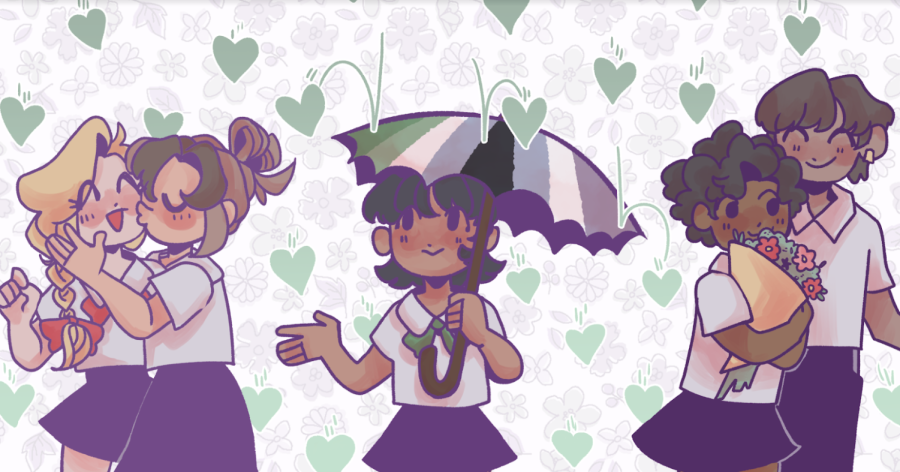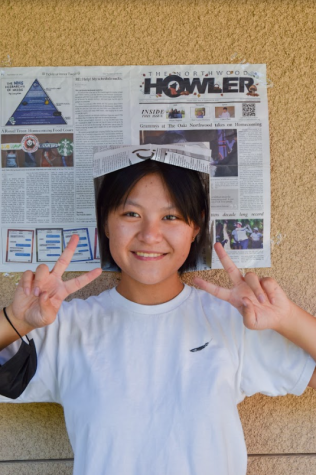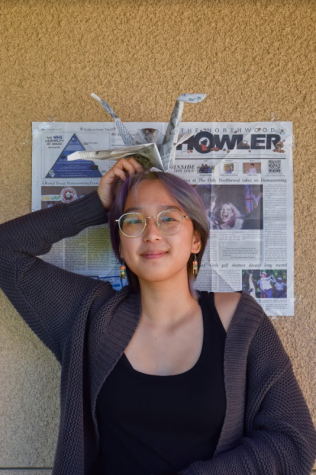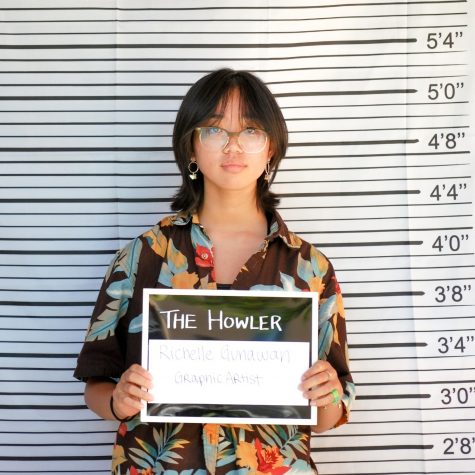Taking a deep dive into the “A” of LGBTQIAP+
IT’S RAINING HEARTS AND LOVE LETTERS: Some people like the rain better than other people.
February 14, 2023
Pink confession letters, boxes of limited-edition chocolate, bouquets of red roses and the only day that couples can have PDA on campus without the side-eyes. Ah, love is truly in the air… except, not quite. At least not for all of us.
The misconceptions regarding aromanticism and asexuality are often perpetuated just from a lack of knowledge on the topic. Although aromanticism is typically defined as having a lack of romantic attraction, this, like most identity labels, is an oversimplification of a more complex spectrum of attraction.
Aromanticism is an umbrella term used to encapsulate other identities such as demiromantic and greyromantic, in which romantic attraction can be felt, but less frequently or only under specific conditions.
Often discussed together with aromanticism is asexuality. Like homosexuality, bisexuality and pansexuality, among others, asexuality is a sexual orientation included under the LGBTQ+ umbrella that describes a lack of attraction. Asexual people, or “aces,” do not feel sexual attraction towards anyone regardless of gender. And no, asexuals do not reproduce through binary fission; as interesting as asexual reproduction is, this isn’t AP Biology.
Aromanticism and asexuality can coexist, but these two terms are not inherently connected. Some may experience romantic attraction without sexual attraction and vice versa: think lust versus love.
A misconception is that aromantic people don’t experience love at all. However, romantic love is hardly the only type of love that exists: Familial and platonic love shouldn’t be valued any less. In fact, aro-ace people may have queerplatonic relationships, or intimate relations that are not romantic in nature. Even people who do not identify as aro or ace may be in queerplatonic relationships without using the label, as the term encompasses anything that crosses over the boundaries of customary friendships that don’t quite reach romance.
Another common misconception is that asexuality is the same as abstinence: While abstinence is voluntary and unrelated to one’s orientation, asexuality is an innate part of someone that cannot be changed by choice. A relatively popular analogy that clarifies asexuality is the “perfume metaphor”: A person born without a sense of smell is confronted with others spraying perfume in their face under the pretense that they “have a nose and therefore should be able to smell” or “they just haven’t found the right smell yet.”
In some cases, aromantic and asexual people are invalidated even within the LGBTQ+ community because they’re considered to have not struggled as much as other members. However, measuring validity by the weight of perceived struggles is just a play on “oppression olympics,” or treating marginalization as a competition.
Historically, romance and sex are so saturated in popular media and heteronormative culture that many face societal pressure to be in a relationship with the end goal of marriage and reproduction, and those who go against this norm are condemned.
For example, in popular medical drama “House, M.D.,” the titular character, Gregory House insists that an asexual couple is “either sick, dead or lying”—which the show itself later confirms by giving the husband a pituitary problem and revealing that the wife faked her sexuality—presenting asexuality as a medical condition that needs to be “fixed.” Although the pressure to be in romantic relationships is present for alloromantic (non-aromantic) people, they do not experience the same invalidation for their choice to live without finding a romantic partner.
That’s not to say all asexual representation has been negative; even as early as 1964, “Gilligan’s Island” featured aromantic-asexual The Professor. Recently there have even been more positive portrayals of characters such as Lilith Crawthorne (“The Owl House”), Seiji Maki (“Bloom into You”) and Anonymous-san (“Our Dreams at Dusk”), all of whom are canonically confirmed or heavily implied to be ace.
As awareness of asexuality and aromanticism becomes more widespread, it’s important to remember that no one experience is the only valid experience and that labels are never one-size-fits-all. While social media and fictional characters alike can help you explore your own sexuality, the experiences described in this article are not definitive. You can take Valentine’s Day as an opportunity to reflect on your identity, but there is no need to force yourself within a label.
For your ever continuous journey of self-discovery, visit the link below from LGBTQ+ organization PFLAG:
https://pflag.org/resource/aromantic-resources/



























































